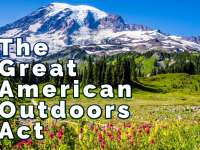There is a lot of buzz around creating parks within a 10 minute walk of all people. But how do we get started? And what should each park contain to best serve local residents? Here’s a basic list and a ton of great resources to help inform the process.
Choose a location
The awesome folks at the Trust for Public Land (TPL) have already done a lot of work to help cities choose where new parks should go. If you’re one of the 100 largest cities in the US, ParkScore® gives you a comprehensive look at park access and quality in your metropolitan area. Smaller cities can check out their ParkServe® tool to map where existing parks are located, gain insight on park equity (who does and does not live within a 10-minute walk of a park) and pinpoint neighborhoods where parks are needed most.
Map demographics
Understanding who lives in the neighborhood is an important factor in building the right park infrastructure. A neighborhood with lots of young families may desire different amenities than one with senior living communities in the vicinity. Hold well-advertised community meetings to understand the makeup of the local residents who would use the park and ask them what would be most meaningful to them. The Census Data Center has great resources for discovering your city demographics, and the Urban Institute also has a variety of interactive maps to provide additional insight.
Engage stakeholders
Schools, hospitals, businesses, government entities, citizen groups, HOAs and others can play important roles in moving the new park forward. From land procurement to budget approvals, to grant applications and fundraising, each will have an important in reaching the final goal. Check out NRPA’s Community Engagement Resource Guide for more tips.
Plant a garden
Trees, shrubs, flowers and even community gardens are valuable resources in parks. A space that attracts birds, butterflies and small wildlife creates the backdrop for a beautiful park. Grassy areas provide spaces for families to picnic, play, run, and enjoy nature. Remember to be respectful of the existing environment, for instance a grass field in the middle of the desert may incur high maintenance bills and disrupt native local ecosystems. Discover more about plants that can beautify a park while providing play value here.
Consider access and comfort
Parking, restrooms, water sources, shade, seating, bike parking, and other basic infrastructure help ensure that people can get to the space and be comfortable while there. The U.S. Access Board has a wealth of resources to ensure all people can have equitable access and use the space. Remember inclusion is a broader definition of design so that public spaces account for all possible use cases across all types of people.
Choose something for everyone
Your community is unique and there are a variety of unique infrastructure options to augment the space. Check out some of the many options we can uniquely provide you, all from one trusted source! We also offer planning resources and services, budget projections, funding resources, data collection models and more. Schedule a no obligation consultation, we’d love to help!



